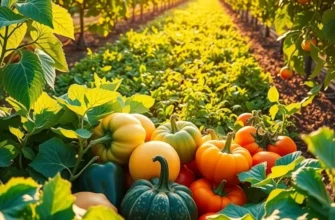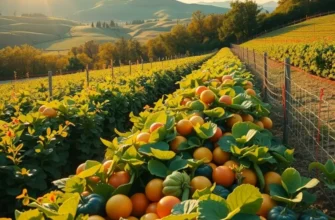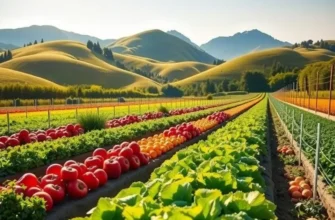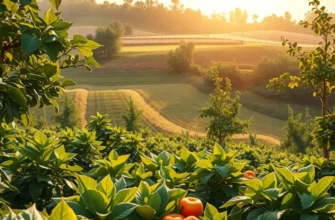The health of our planet depends on the very foundation of life: the soil. With sustainable food choices, individuals can play a vital role in improving soil health. This guide explores foods that promote soil regeneration, offering practical tips for environmentally-conscious consumers eager to make a difference. Every meal can support a thriving ecosystem and sustainable agriculture practices, ensuring a healthier planet for future generations.
Choosing Regenerative Crops

Selecting the right crops is crucial for enhancing soil health. By opting for plants that nourish the soil while growing, we actively contribute to the regeneration of our environment. Among these beneficial crops, legumes, perennial grains, and nutrient-rich varieties stand out as champions of soil restoration.
Legumes are exceptional for their ability to fix atmospheric nitrogen into the soil. This natural fertilization process occurs through a symbiotic relationship with rhizobia bacteria, which inhabit nodules on the plant roots. As legumes mature, they enrich the soil with organic nitrogen, reducing the need for synthetic fertilizers. This enhancement of soil fertility not only benefits the legumes themselves but also future plantings. Common legumes include clover, lentils, peas, and beans, all of which can become cornerstones in a rotational cropping system designed to bolster soil vitality.
Beyond legumes, perennial grains offer another innovative way to regenerate soils. Unlike annual crops that require tilling each year, perennials establish deeper root systems, improving soil structure and reducing erosion. These roots also help sequester carbon, an essential action in combating climate change. One such example is kernza, a wheatgrass with impressive potential in sustainable farming practices. By maintaining a permanent cover, perennial grains protect and build soil, enhancing its resilience to environmental fluctuations.
Additionally, adding a diversity of nutrient-rich crops enhances biodiversity within the soil ecosystem. Cover crops like buckwheat and mustard can break pest cycles and build organic matter. Their rapid growth covers the soil surface, suppressing weeds and preventing erosion. Upon decomposition, they release a variety of nutrients back into the soil. This supports subsequent crops and improves the overall soil structure.
Fostering biodiversity is not limited to just plant variety but also includes soil microorganisms. The presence of different crops encourages diverse microbial communities, vital for soil health. These microorganisms assist in breaking down organic matter and recycling nutrients, boosting the soil’s ability to support robust plant growth. By carefully choosing which crops to cultivate, farmers can reinforce this dynamic ecosystem.
Implementing practices such as crop rotation and polyculture farming can maximize the benefits of regenerative crop choices. By rotating diverse crops annually, we can disrupt pest and disease cycles, further enhancing soil productivity. Moreover, integrating polyculture allows for multiple plant species to coexist, supporting each other and the surrounding soil landscape.
This approach reflects an understanding that healthy soils lead to healthier plants and ecosystems. By selecting regenerative crops, we nurture a thriving soil environment. As part of a broader sustainable eating initiative, incorporating eco-friendly practices into kitchen systems, such as this elegant storage solution, can further energize efforts to support environmental well-being. Thus, choosing crops thoughtfully forms a bridge between agricultural health and our own nutritional habits, strengthening the fundamental cycles that sustain us all.
Incorporating Organic Practices
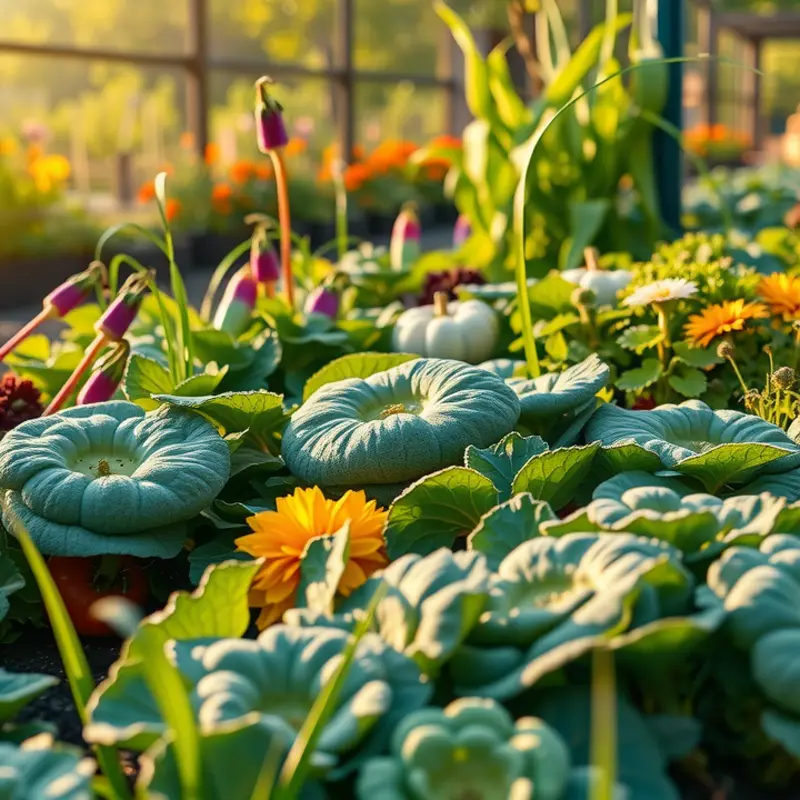
Organic farming practices have become essential in the battle for soil regeneration. These practices not only preserve the environment but also enhance the soil’s fertility, promoting healthier crops. Techniques such as crop rotation, composting, and no-till farming are fundamental to fostering a resilient agricultural ecosystem.
Crop rotation involves changing the types of crops grown in a specific area from season to season. This technique prevents soil nutrient depletion, improves soil structure, and reduces pest and weed pressure. For example, alternating nitrogen-fixing legumes with nutrient-demanding plants helps balance soil fertility naturally. Home gardeners can replicate this by planning their gardens and dedicating different plots to various types of plants each year.
Composting is another powerful tool for soil regeneration. It recycles organic waste into nutrient-rich humus that enhances soil texture and nutrient content. By composting kitchen scraps and garden waste, gardeners can create their own fertilizer, reducing the dependency on chemical fertilizers that often degrade soil health over time. A simple compost pile, turned regularly to aerate the contents, can yield significant results. For guidance on low-waste cooking and maximizing compostable kitchen materials, consider this resource on low-waste cooking prep.
No-till farming, or reduced tillage, is an approach that preserves the soil’s natural structure and reduces erosion. Introducing cover crops instead of turning the soil can protect it from the elements, maintain moisture levels, and foster beneficial microbial communities. Gardeners might opt for planting ground covers like clover or vetch in their off-seasons to maintain soil health and structure.
Beyond these techniques, permaculture principles can also be integrated into home gardens. This involves designing the garden layout to mimic natural ecosystems, promoting sustainability and biodiversity. Implementing polycultures, where different plant species grow together, can also enhance resilience against pests and diseases.
Organic practices are not only applicable to large-scale farms but can be adapted for smaller, personal gardens too. By embracing these methods, individuals contribute to soil conservation and a sustainable future. Through education and consistent application of these techniques, a notable impact on soil health and biodiversity can be achieved, supporting a flourishing, nutritious garden environment.
Final words
Choosing foods that promote soil regeneration is crucial for maintaining our planet’s health and supporting sustainable farming practices. By opting for regenerative crops and integrating organic methods into your gardening, you contribute to a cycle that nourishes the earth and restores its vitality. Each meal becomes an opportunity to support a healthy ecosystem. Remember, every small choice counts! Together, we can foster a resilient and thriving environment for generations to come.



